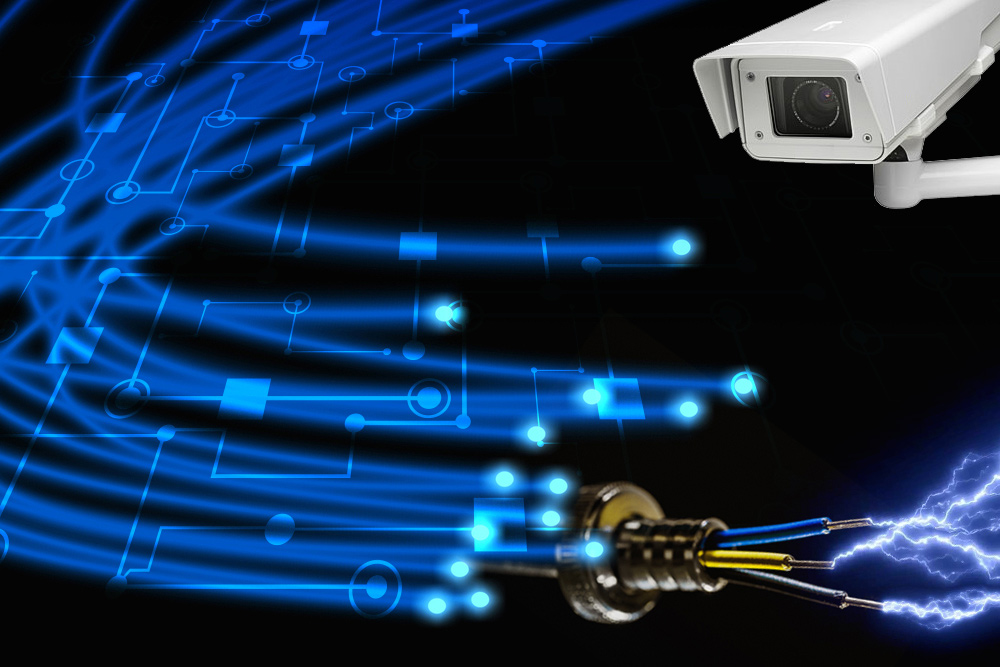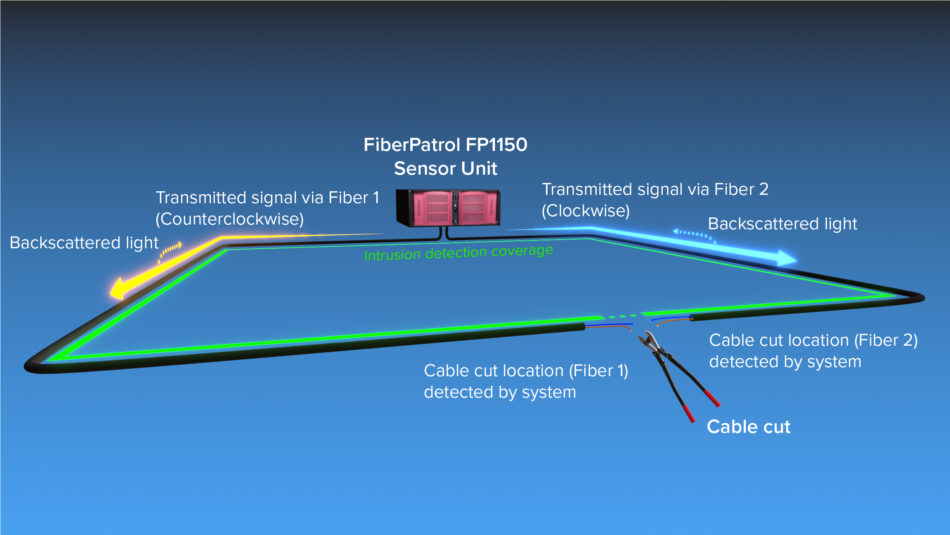The Process of Installing a Fiber Optics Infrastructure for Security Installations in Commercial Spaces
The Process of Installing a Fiber Optics Infrastructure for Security Installations in Commercial Spaces
Blog Article
Why Fiber Optic Safety And Security Systems Are the Future of Security
The transition to fiber optic protection systems notes a considerable development in the world of protection, driven by their phenomenal information transmission capacities and durability to external disturbances. As the landscape of security develops alongside arising modern technologies such as AI and IoT, the capacity for fiber optics to boost and redefine safety and security frameworks ends up being significantly noticeable.
Benefits of Fiber Optic Systems
One of the key advantages of fiber optic systems is their exceptional bandwidth capacity, which assists in the transmission of huge volumes of data over lengthy distances without considerable loss. This particular is particularly valuable for protection applications that require the continuous monitoring and transfer of high-def video feeds, sensing unit data, and various other essential information. Optical fiber can suit the growing needs of modern-day safety systems, making certain that data stays undamaged and dependable.
Additionally, fiber optic cables are much less at risk to electromagnetic disturbance, which can be a considerable issue in settings with various electronic tools. This resistance enhances the integrity of the information being sent, thus lessening the risk of data breaches or system failures. Fiber optic systems are naturally more secure than typical copper cords, as touching into a fiber optic line without detection is extremely challenging.
The toughness of fiber optic wires also adds to their allure. They are immune to environmental aspects such as moisture and temperature level variations, lowering maintenance expenses and raising system longevity. Generally, these benefits placement fiber optic systems as a durable and effective choice for modern-day safety facilities, making sure trustworthy and safe and secure data transmission.
Boosted Data Transmission Rate

The ability to transmit vast amounts of information swiftly facilitates the seamless integration of high-definition video feeds and advanced analytics. Protection systems can now process and evaluate details in real-time, enhancing action times and situational recognition. In addition, fiber optic links sustain longer transmission ranges without destruction of signal quality, making them perfect for extensive safety and security networks.
The raised rate of fiber optic systems not just enhances the effectiveness of safety and security operations however additionally minimizes latency. This is specifically vital in critical situations where prompt decision-making can avoid safety breaches or reduce potential threats. As companies remain to prioritize security and efficiency, the need for rapid and trusted information transmission will most certainly solidify fiber optic systems as a cornerstone of contemporary safety infrastructure.
Resistance to Interference
Fiber optic protection systems constantly demonstrate extraordinary resistance to electromagnetic disturbance, a critical benefit in atmospheres prone to electronic sound. Unlike standard copper cable televisions, which can be negatively impacted by magnetic fields, superhigh frequency disturbance, and other kinds of electric disturbance, fiber optic cords utilize light to send information. This intrinsic residential or commercial property makes certain that the signals continue to be clear and unaltered, despite bordering electronic task.
Using glass or plastic fibers in fiber optic technology produces an obstacle against disturbance, permitting dependable data transmission even in difficult scenarios such as commercial facilities, city areas with high digital website traffic, or places near radio towers. This particular significantly decreases the likelihood of signal deterioration or loss, making fiber optic systems specifically suitable for safety applications where honesty and accuracy of data are extremely important.
Moreover, this resistance to interference improves the total performance and reliability of safety systems, making certain that monitoring and alert systems function perfectly. In a world where safety and security is significantly threatened by sophisticated innovations, the strength of fiber optic systems attracts attention as a pivotal feature, reinforcing their condition as an essential component of contemporary safety facilities.
Cost-Effectiveness Gradually
Considerable price financial savings can be achieved over time with the implementation of fiber optic security systems. While the initial financial investment may appear higher compared to typical copper-based systems, the long-term financial benefits become obvious through reduced operational and upkeep prices (fiber security). Fiber optic cable televisions are naturally much more resilient and less susceptible to environmental variables, which equates to reduce replacement and repair work expenses over their life-span
Additionally, fiber optic systems need much less power to operate, which better reduces power expenses. Boosted data transmission capacities permit less repeaters and amplifiers, reducing tools investment and enhancing setup procedures. The scalability other of these systems additionally adds to cost-effectiveness, as organizations can broaden their security facilities without sustaining considerable extra expenses.
One more variable to consider is the boosted performance in monitoring and action capabilities that optical fiber provide. Improved real-time information transmission can bring about quicker event feedback times, possibly mitigating losses and liabilities related to protection violations. In sum, the long-term benefits of fiber optic protection systems not just validate the preliminary expense but also position them as a monetarily sensible selection for companies seeking robust defense remedies.

Future Developments in Safety
Advancing innovations are readied to revolutionize safety and get redirected here security systems, integrating fabricated knowledge (AI) and device knowing to improve danger discovery and response capacities. These innovations will certainly permit safety and security systems to assess large amounts of information in real-time, determining patterns and anomalies that suggest prospective dangers. This positive approach will certainly allow much faster decision-making and a lot more effective case reactions.
Furthermore, the consolidation of the Internet of Things (IoT) is leading the way for interconnected safety and security devices, using thorough security and monitoring. Smart sensing units can pass on details regarding ecological modifications, while automated signals can notify safety and security employees quickly of dubious activities.
Moreover, the development of biometric technologies will better strengthen security mechanisms. Facial acknowledgment, finger print scanning, and retina identification are ending up being extra sophisticated, providing layers of authentication that are challenging to bypass.
Verdict
To conclude, fiber optic safety systems represent a considerable improvement in security innovation, offering unequaled information transmission rate, resistance to electromagnetic disturbance, and long-term cost-effectiveness. As the demand for sophisticated protection remedies continues to expand, the assimilation of optical fiber with emerging modern technologies such as my link AI, IoT, and biometrics will further enhance protection infrastructures (fiber security). The mix of these innovations will make certain an extra protected and receptive atmosphere, solidifying fiber optics as a keystone of future safety and security systems
Report this page